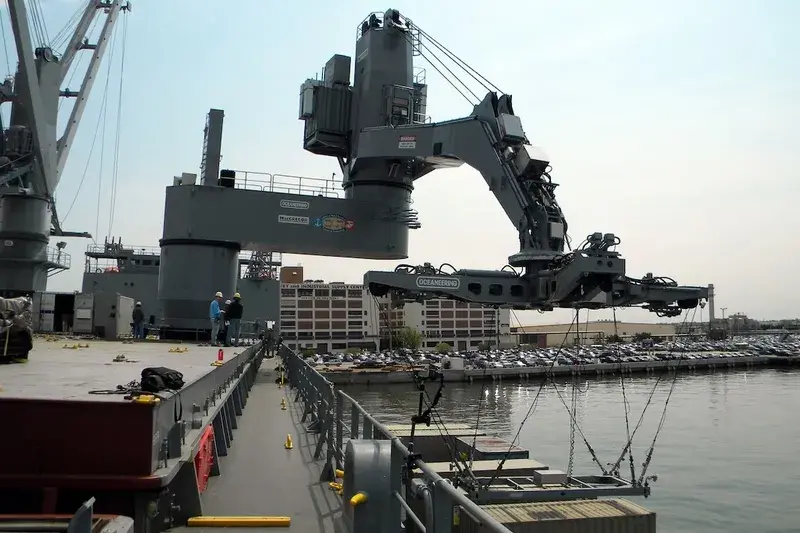More than a dozen cellular modems were discovered in operational cranes at just one U.S. port, with another found in the server center of another port.

A Congressional investigation into cargo cranes manufactured by China and deployed in ports across the country has uncovered communication equipment that would not be used for their normal operation, raising concerns about potential risks to national security.
According to congressional sources and documents obtained by The Wall Street Journal, in some cases, cellular modems were found in these cranes, which could be accessed remotely. More than a dozen cellular modems were discovered in operational cranes at just one U.S. port, with another found in the server center of another port.
This finding has heightened concerns in Washington regarding port security and relations with China. Pentagon officials and intelligence agencies under the Biden administration have become increasingly alarmed by the potential threat of disruption and espionage associated with the large cranes produced by ZPMC, a China-based manufacturer that controls nearly 80% of the dock cranes used in U.S. ports.
“The Chinese government is seizing every opportunity to obtain valuable information and position itself to exploit vulnerabilities, systematically infiltrating U.S. critical infrastructure, including the maritime sector. The United States has ignored this threat for too long,” said Representative Mark Green, chairman of the House Homeland Security Committee, which has been investigating Chinese maritime security threats, to the WSJ.
Although installing modems in cranes for remote monitoring and maintenance is not unusual, it appears that at least some ports using equipment manufactured by ZPMC had not requested such capability, according to congressional investigators and documents reviewed by The Wall Street Journal.
ZPMC is a Chinese state-owned company, and concerns about its cranes have been growing in Washington for years. In 2021, the FBI found intelligence-gathering equipment on a ship transporting cranes to the port of Baltimore.
Last month, the Biden administration announced an investment of over $20 billion over the next five years for domestic crane manufacturing for use in ports, hoping to counter the dominance of Chinese machinery in the sector.
These measures are “clear examples of President Biden’s work to invest in America, secure the country’s production chain, and strengthen the cybersecurity of key infrastructures,” said White House Deputy National Security Advisor Anne Neuberger in a press call.
Around 80% of cranes used to unload shipments from ships to land in the United States are manufactured in China, according to Admiral John Vann, head of the Coast Guard’s Cyber Command.
These cranes can be used and programmed remotely, making them vulnerable to exploitation. The office will also issue a directive imposing certain cybersecurity requirements on the owners and operators of these cranes.
This marks the first time in 30 years that the U.S. will have a domestic option for port cranes.
Additionally, the government will fortify the country’s ports against potential cyberattacks, giving new powers to the Coast Guard to manage such situations or establishing new requirements for the use of cranes manufactured in China.
These measures can range from restricting the movement of suspicious vessels to establishing and verifying new requirements for the use of port infrastructure.
A partially redacted letter sent in December to the committee and seen by the WSJ, from an unidentified U.S. port operator, revealed that the modems were not included in any existing contracts, although the port was aware of their presence in the cranes. The modems were intended for a mobile diagnostic and monitoring service, for which the port had not signed up.
The letter also mentioned that many of the cranes in U.S. ports were built at ZPMC’s Changxing base, next to a shipyard on Shanghai Island where the Chinese navy constructs advanced warships.







